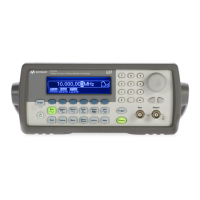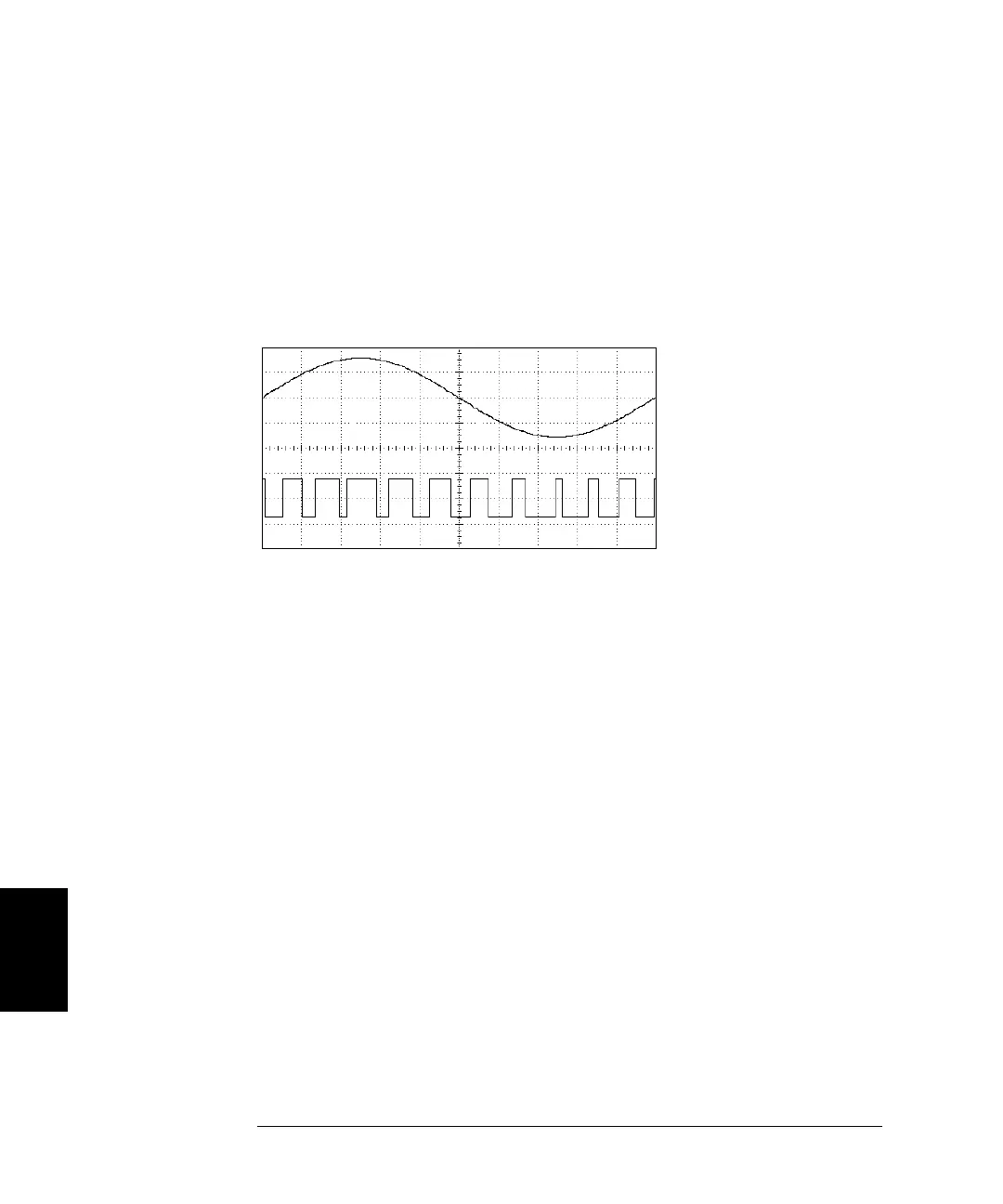328
Chapter 7 Tutorial
Modulation
7
Pulse Width Modulation (PWM)
PWM is used in digital audio applications, motor control circuitry,
switching power supplies, and other control applications. The
Keysight
33210A provides PWM for pulse waveforms, and PWM is the only type of
modulation supported for pulse waveforms. For PWM, the amplitude of
the modulating waveform is sampled digitally and used to control the
pulse width or duty cycle of the pulse waveform.
Pulse Width Modulation
The variation of pulse width in the modulated waveform from the pulse
width of the pulse waveform is called the width deviation. The deviation
can also be expressed in terms of duty cycle (as a percentage referenced
to the period of the pulse waveform), which is called the duty cycle
deviation. In PWM the deviation of width or duty cycle is symmetrical
around the pulse width or duty cycle of the origin
al p
ulse waveform. For
example, if you specify a pulse waveform with a 10% duty cycle, and then
specify PWM with a duty cycle deviation of 5%, the modulated waveform
will have a pulse that varies in duty cycle from 5% to 15% under control
of the modulating waveform.
Modulating Signal
Modulated Waveform
33210A users guide.book Page 328 Wednesday, July 16, 2008 11:16 AM

